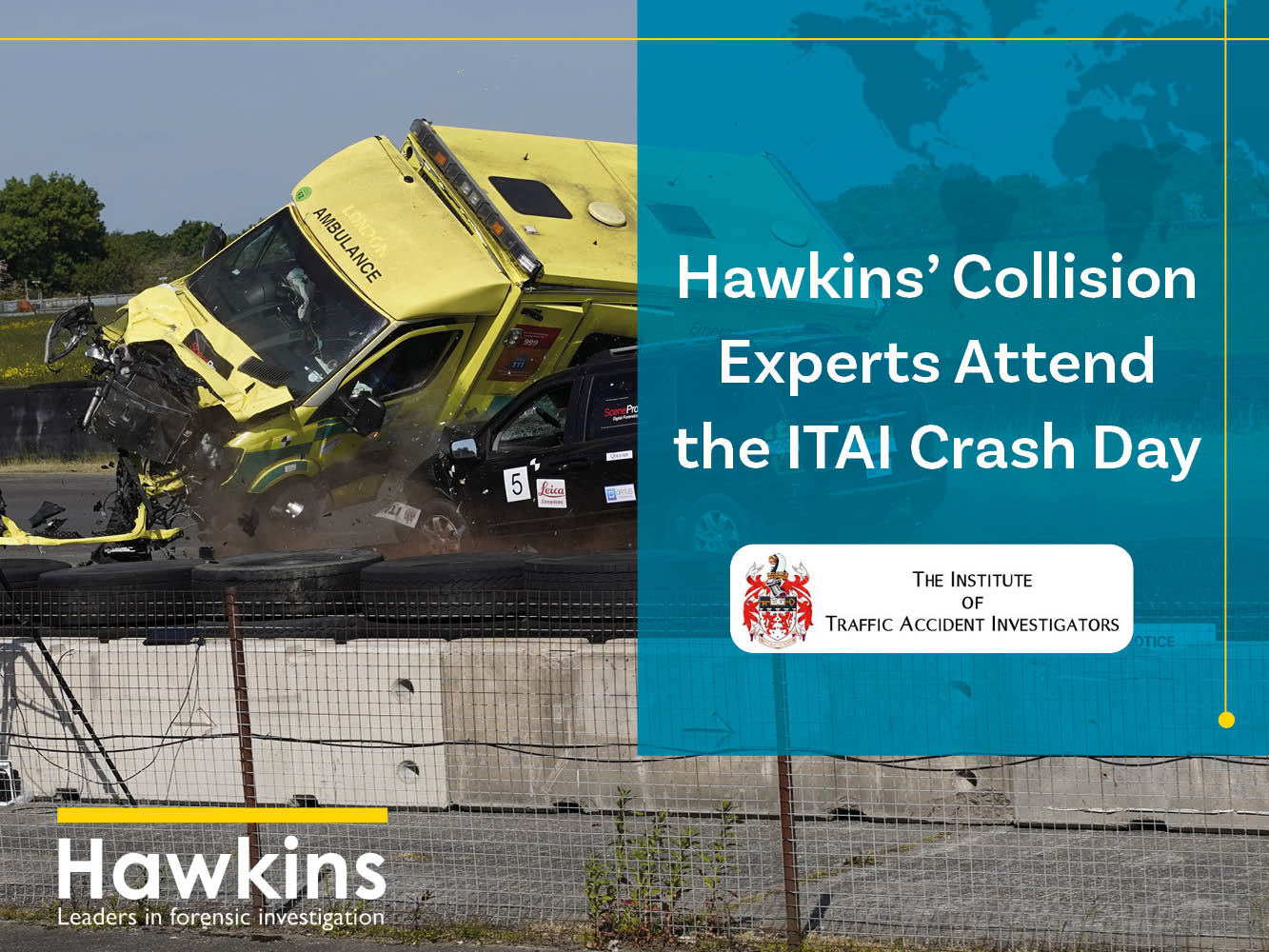It is essential for investigators to ensure they are up to date on the latest advancements in technology within their respective fields.
This is particularly true for our collision reconstruction experts within the ever-evolving motor industry. As part of their research, Richard Baker, James Kingham, James Wade, Dr John Camplin, and Charles Murdoch, attended the Institute of Traffic Accident Investigators (ITAI) Crash Day in June.

The event was held at Darley Moor Race Circuit, Derbyshire, with the purpose of showcasing a series of crash tests under controlled conditions. The scene and the vehicles were then examined to understand the impact of the various crashes on the different vehicle types. This highlighted what precautions should be taken to promote the best safety practices for road collisions, and what investigators can expect at a collision site to aid future investigations.
There were a total of 10 controlled crashes carried out during the day using several vehicle types, each with different scenarios, including a series of head-on collisions with both cars travelling at 10, 20, 30, and 40 mph, respectively. Other crash tests included collisions into a traditional lighting column/pole at 50mph, and shunt impacts of an ambulance crashing into 3 static cars.


The event also included lectures on vehicle technologies. This included a demonstration of the ever-prevalent e-scooters, comparing rental and private types, and an insight into their safety precautions as well as collision impacts. E-scooters are now a common sight in the UK and whether they are privately owned or rented as part of a Government scheme determines the legal position and insurance required. Our collision reconstruction expert Gavin Dunn recently wrote an article on this topic: Understanding e-scooters – The Risks and the Law, which provides further detail.
Another lecture discussed how Advanced Driver Assistance Systems (ADAS) have become widespread in modern motoring, how they are used, and the effects of future regulations.
The aim of the ITAI has always been the improvement of road traffic safety, through both the investigation of road traffic accidents and the development of safer highways. The day provided our experts with valuable additional insights into factors such as weather conditions, the speed of the vehicle, and the type of road, to maintain their skills and knowledge allowing them to remain experts in their field.
Hawkins would like to thank the ITAI, for an insightful and informative day.











